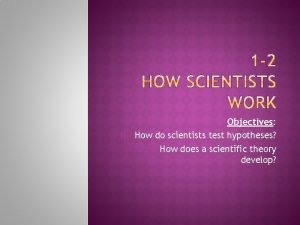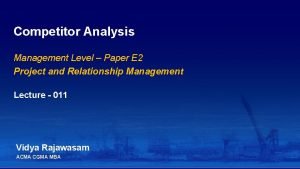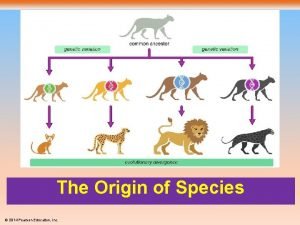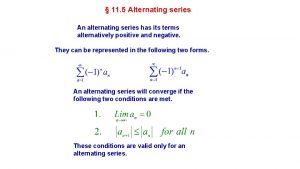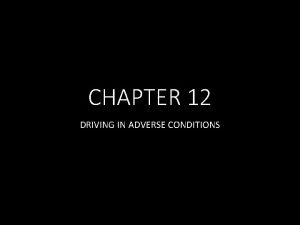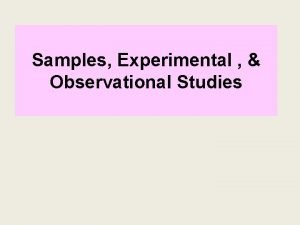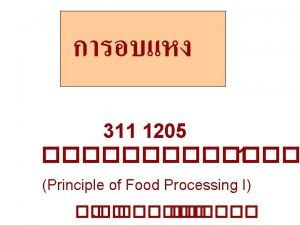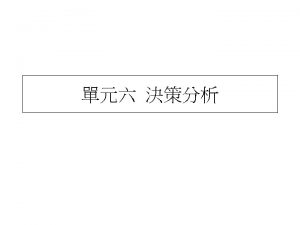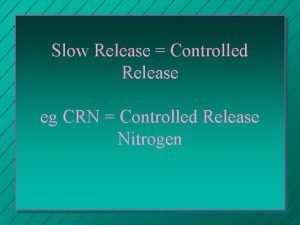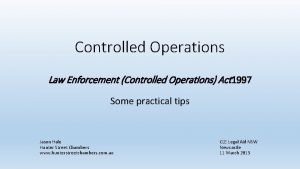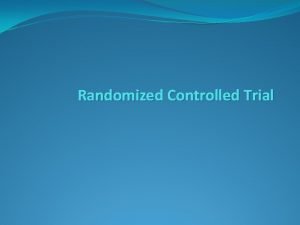Experiments Data is gathered under controlled conditions set


























- Slides: 26

Experiments • Data is gathered under controlled conditions set by researcher • Experimental Group is exposed to the independent variable • Control group is not exposed to variable • We focus on the effects produced by the variable • All other conditions should remain the same • Makes it possible for researcher to conclude that results are caused by the variable

Experiments on Groups Social Interaction Experiment • http: //www. youtube. com/watch? v=P 7 zc. DZn. Wh. U • What’s the bystander effect?

The Bystander Effect - Experiment • http: //www. youtube. com/watch? v=z 4 S 1 LLr. Sz VE

Bystander Effect – Kevin Carter’s Photograph

Understanding Group Behavior Why do we act different when we are part of a group?

Groups are not…. . • Aggregates: when people gather in the same place at the same time but lack organization or interaction – Ex. People in an airplane • Social Categories: a way of classifying people according to a status or trait – Ex. Women, teenagers, students

Understanding Group Behavior • Groups must: – Consist of two or more people – Show some interaction among group members – Have shared expectations – Possess some sense of common identity • Groups can: – Be small (two people on a date) – Be large (500 soldiers in boot camp) – Be either intimate (family) or formal (work)

Formal Groups vs. Informal Groups • Formal Groups: structure, goals, and activities of the group are clearly defined – Ex. Basketball Team • Informal Groups: no official structure or established rules of conduct – Ex. Friends

Is Size of Groups a Factor? Dyad Ø two people • smallest possible group • Each member has direct control over the group’s existence • Decision making is difficult. Either agree or convince the other Triad Ø Three People – make it easier to decide – Group is more independent from individual members – A single person cannot disband the group – Two against one alliance

Size of Groups • Small Groups: everyone interacts on a face-toface basis • 15 is the largest number of people that can work well in one group. • Larger groups create a tendency for members to get into smaller groups • Larger Groups make individuals feel less responsible for his/her own actions

Group Functions • Set Goals – Nature and scope varies according to the group • Assign Tasks – Decide what is going to be done, and who is going to do it • Control members’ behavior – People in group must conform to norms

Have you ever engaged in actions that are deemed immoral or would cause pain on others just to go along with a group? Do you know anyone who has?

Groups Influence Behavior • Individual will change behavior to comply with the group’s norms and decisions • Group pressure does not have to be strong to influence behavior • Members of the group are willing to compromise their own judgments

Groupthink • Sociologist William Whyte coined the term “Groupthink” – When members go along with the group even if they privately disagree • Groupthink – Gives illusion unanimity – Puts pressure on people who do not agree – Gives unquestioned belief in morality of group

Groups Influence Behavior • http: //www. correntewire. com/basic_sociolog y_group_behavior • Solomon Asch Experiment (1956) on the Power of Groups. • One Third of the subjects provided wrong answers just to go along with the group

What would people do in more serious situations? • Milgram’s Obedience Experiment (1963) • He wanted to know why Nazi soldiers did not feel responsible for deaths. • Soldiers said they were following orders • Experiment is testing obedience to authority • Two thirds of the subjects proceeded to inflict pain. • There is a separation of the individual from the role they are supposed to play • http: //www. youtube. com/watch? v=pdb 20 gcc_Ns&li st=TLD 5 Qq. U 9 ut 4 dc

In-Groups and Out-Groups In-Group Out-Group • A group a person identifies with and belongs to • Use symbols to separate from other groups • Any group a person does not belong to – Badges, clothing, names • View themselves positively and view out-groups negatively • Feeling of superiority leads to conflict or competition (could be peaceful or violent)

Understanding Groups • http: //educationportal. com/academy/lesson/social-groupsdyad-and-triad-in-groups-and-out-groups. html

What’s a leader?

Leadership in Groups • Leaders: people who influence the attitudes and opinions of others • Two types of leaders: instrumental and expressive leaders

Leaders Instrumental Expressive • Task-oriented • Find specific means that will allow the group to attain goals • Ex. Develop Game Plan for football team • Emotion-oriented • Find ways to maintain group together and maintain morale • Ex. Use chants to keep team spirit high

Instrumental Leadership • http: //www. youtube. com/watch? v=Hi. B 9 L 3 d. G -Aw

Expressive Leadership • http: //www. youtube. com/watch? v=XUk. Kv. HC Vnlo

Bill Belichick Instrumental and Expressive Leader • http: //www. nfl. com/news/story/0 ap 1000000 137275/article/two-of-a-kind-bill-belichickkobe-bryant-are-buddies

Leadership and the Power of Followers • http: //www. ted. com/talks/derek_sivers_how _to_start_a_movement. html? quote=679

Power. Point 8 – The End
 How do scientist test hypothesis? *
How do scientist test hypothesis? * What is the overlap of data set 1 and data set 2?
What is the overlap of data set 1 and data set 2? Total set awareness set consideration set
Total set awareness set consideration set Training set validation set test set
Training set validation set test set The drug basket method is used dispense medication to
The drug basket method is used dispense medication to Scientific inquiry vs scientific method
Scientific inquiry vs scientific method Gathered here in the mystery of the hour
Gathered here in the mystery of the hour The actors gathered in the banquet room
The actors gathered in the banquet room 신일녀 스캇
신일녀 스캇 The world is too much with us paraphrasing
The world is too much with us paraphrasing Why are fibers important to forensics
Why are fibers important to forensics Competitor intelligence should be gathered mcq
Competitor intelligence should be gathered mcq Describe the conditions under which new species may arise.
Describe the conditions under which new species may arise. Snub braking
Snub braking Objectives of mrp
Objectives of mrp How to find cell potential under nonstandard conditions
How to find cell potential under nonstandard conditions Alternate series error
Alternate series error To give yourself more time for the ipde process at night
To give yourself more time for the ipde process at night Cross sectional view
Cross sectional view Bounded set vs centered set
Bounded set vs centered set Fuzzy logic
Fuzzy logic Crisp set vs fuzzy set
Crisp set vs fuzzy set Crisp set vs fuzzy set
Crisp set vs fuzzy set Correspondence function examples
Correspondence function examples Http://earthobservatory.nasa.gov/experiments/biome/
Http://earthobservatory.nasa.gov/experiments/biome/ Test your hypothesis
Test your hypothesis Biased and unbiased samples
Biased and unbiased samples
